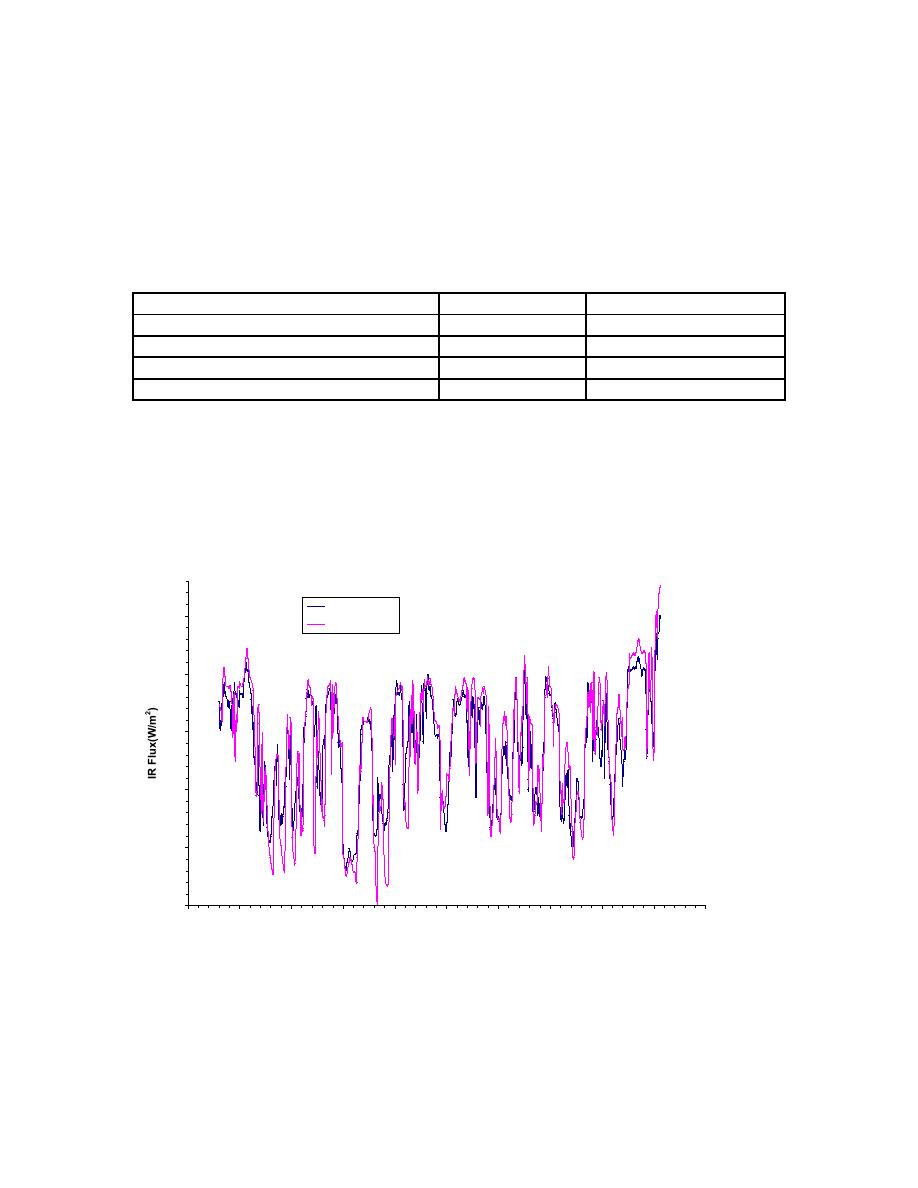
not known whether the parameterization of the atmospheric emissivity can effectively
handle these extreme conditions. In addition, the computed downwelling infrared flux is
fairly sensitive to the low cloud amount as anticipated. For example, a change of 0.1 in
the cloud amount for a cloud at one kilometer will result in a change of approximately 90
W/m2 in the downwelling flux. The average flux values for clear, scattered (0.1 to 0.5
cloud cover), broken (0.6 to 0.9 cloud cover), and overcast (1.0 cloud cover) are given in
Table 3.2.2.
Table 3.2.2 Yuma average downwelling IR flux for different cloud conditions.
Cloud amount
Measured IR
Calculated IR
Clear
311.7
296.40
Scattered (0.1 to 0.5 cloud cover)
328.7
332.33
Broken (0.5 to 0.9 cloud cover)
369.2
373.10
Overcast (1.0 Cloud cover)
348.7
370.40
Grayling II was a winter field program. Fog, including ice fog, and very low surface
temperatures (20 C) will tax the ability of the model to accurately predict the
downwelling infrared flux. The comparison of the measured and the calculated flux is
presented in the following figures and table.
Grayling II Downwelling Infrared Flux Comparison
Measured IR
370
Calculated IR
320
270
220
170
120
60
65
70
75
80
85
90
95
100
105
110
Fractional Day
Figure 3.6 Comparison of the downwelling measured and computed longwave flux based
on the Grayling II meteorological observations.
22



 Previous Page
Previous Page
